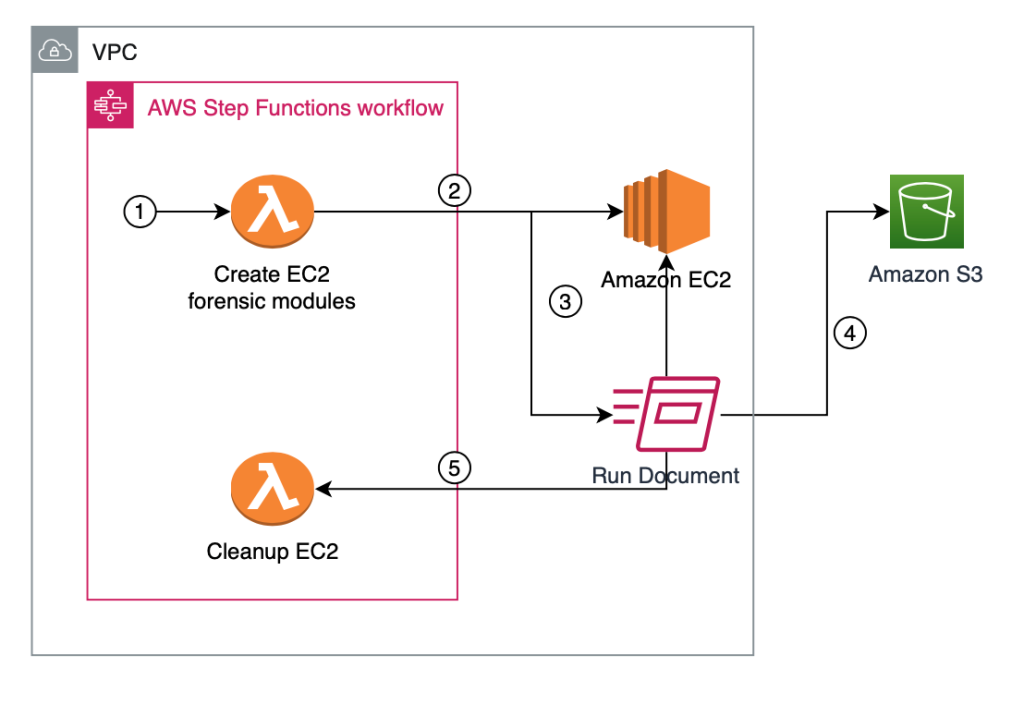AWS Security Blog
Tag: Automation
How to automate incident response for Amazon EKS on Amazon EC2
Triaging and quickly responding to security events is important to minimize impact within an AWS environment. Acting in a standardized manner is equally important when it comes to capturing forensic evidence and quarantining resources. By implementing automated solutions, you can respond to security events quickly and in a repeatable manner. Before implementing automated security solutions, […]
New whitepaper available: Building security from the ground up with Secure by Design
Developing secure products and services is imperative for organizations that are looking to strengthen operational resilience and build customer trust. However, system design often prioritizes performance, functionality, and user experience over security. This approach can lead to vulnerabilities across the supply chain. As security threats continue to evolve, the concept of Secure by Design (SbD) […]
Implementing a compliance and reporting strategy for NIST SP 800-53 Rev. 5
Amazon Web Services (AWS) provides tools that simplify automation and monitoring for compliance with security standards, such as the NIST SP 800-53 Rev. 5 Operational Best Practices. Organizations can set preventative and proactive controls to help ensure that noncompliant resources aren’t deployed. Detective and responsive controls notify stakeholders of misconfigurations immediately and automate fixes, thus […]
Perform continuous vulnerability scanning of AWS Lambda functions with Amazon Inspector
This blog post demonstrates how you can activate Amazon Inspector within one or more AWS accounts and be notified when a vulnerability is detected in an AWS Lambda function. Amazon Inspector is an automated vulnerability management service that continually scans workloads for software vulnerabilities and unintended network exposure. Amazon Inspector scans mixed workloads like Amazon […]
AWS Security Hub launches a new capability for automating actions to update findings
June 29, 2023: This post was updated to modify automation rules, CloudFormation support, and integration with finding history. If you’ve had discussions with a security organization recently, there’s a high probability that the word automation has come up. As organizations scale and consume the benefits the cloud has to offer, it’s important to factor in […]
Analyze Amazon Cognito advanced security intelligence to improve visibility and protection
January 28, 2025: The following blog post describes how to process AWS CloudTrail logs for user authentication events and query events for additional intelligence. Amazon Cognito added support for exporting threat protection user activity logs, which helps to streamline log processing for Plus feature tier customers. However, customers in the Plus tier can still use […]
How to automatically build forensic kernel modules for Amazon Linux EC2 instances
In this blog post, we will walk you through the EC2 forensic module factory solution to deploy automation to build forensic kernel modules that are required for Amazon Elastic Compute Cloud (Amazon EC2) incident response automation. When an EC2 instance is suspected to have been compromised, it’s strongly recommended to investigate what happened to the […]
How to automate updates for your domain list in Route 53 Resolver DNS Firewall
Note: This post includes links to third-party websites. AWS is not responsible for the content on those websites. Following the release of Amazon Route 53 Resolver DNS Firewall, Amazon Web Services (AWS) published several blog posts to help you protect your Amazon Virtual Private Cloud (Amazon VPC) DNS resolution, including How to Get Started with […]
Streamlining evidence collection with AWS Audit Manager
In this post, we will show you how to deploy a solution into your Amazon Web Services (AWS) account that enables you to simply attach manual evidence to controls using AWS Audit Manager. Making evidence-collection as seamless as possible minimizes audit fatigue and helps you maintain a strong compliance posture. As an AWS customer, you […]
How to automate SCAP testing with AWS Systems Manager and Security Hub
US federal government agencies use the National Institute of Standards and Technology (NIST) framework to provide security and compliance guidance for their IT systems. The US Department of Defense (DoD) also requires its IT systems to follow the Security Technical Implementation Guides (STIGs) produced by the Defense Information Systems Agency (DISA). To aid in managing […]









